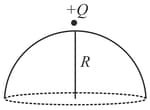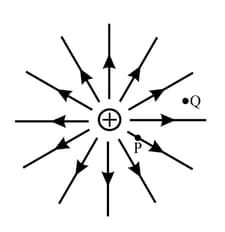Angle between an equipotential surface and electric lines of force is
Important Questions on Electrostatics
Define:
Equipotential surface.
The equipotential surface through a point is normal to the electric field at that point.
Draw the equipotential surfaces for a uniform electric field.

The electric field lines of a positive charge is as shown in figure. What is the shape of equipotential surface near the charge ?

What is the direction of electric field with respect to an equipotential surface?
Draw equipotential surface due to an isolated point charge and depict the electric field lines.
The equipotential surface through a point is normal to the electric field at that point.
What is meant by equipotential surface?
The equipotential surface through a point is normal to the electric field at that point.
What is the work done to move a charge on an equipotential surface?

